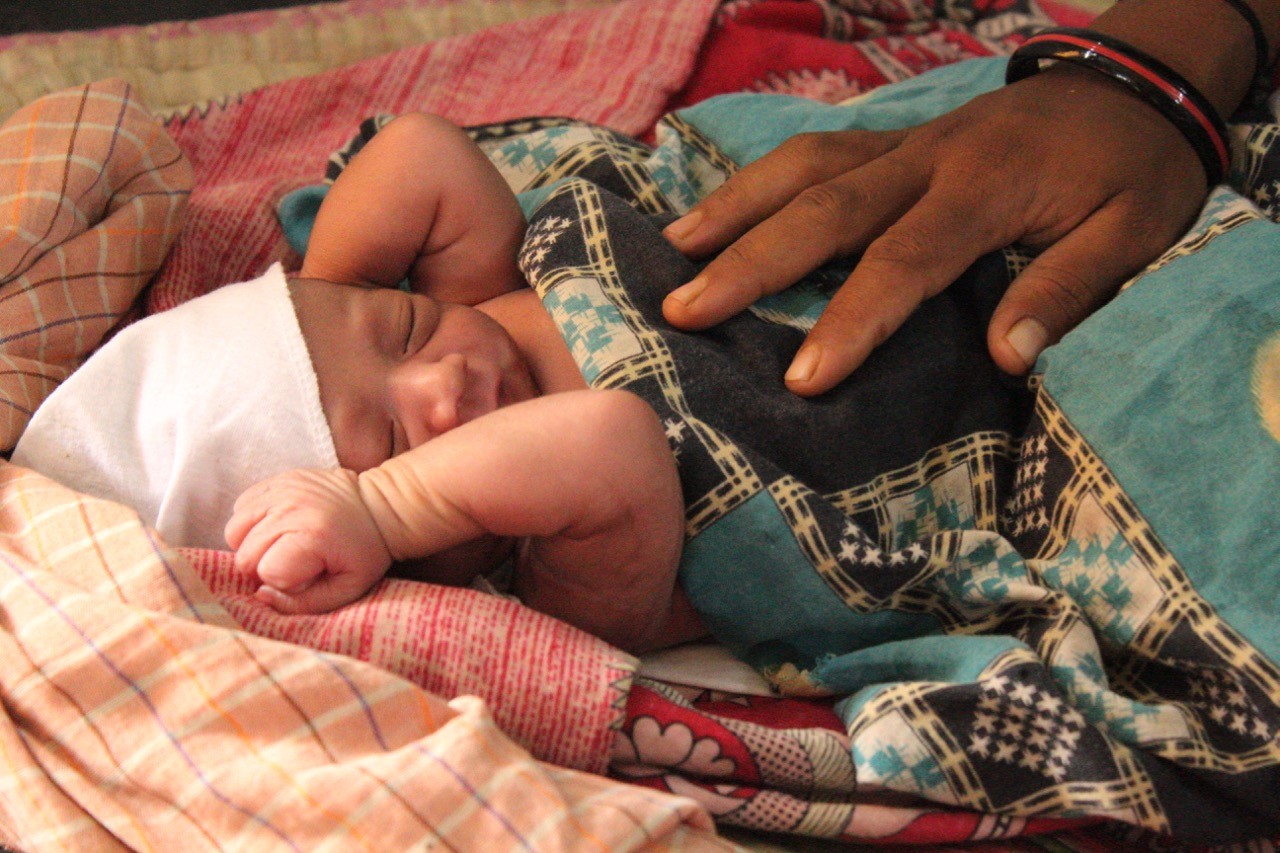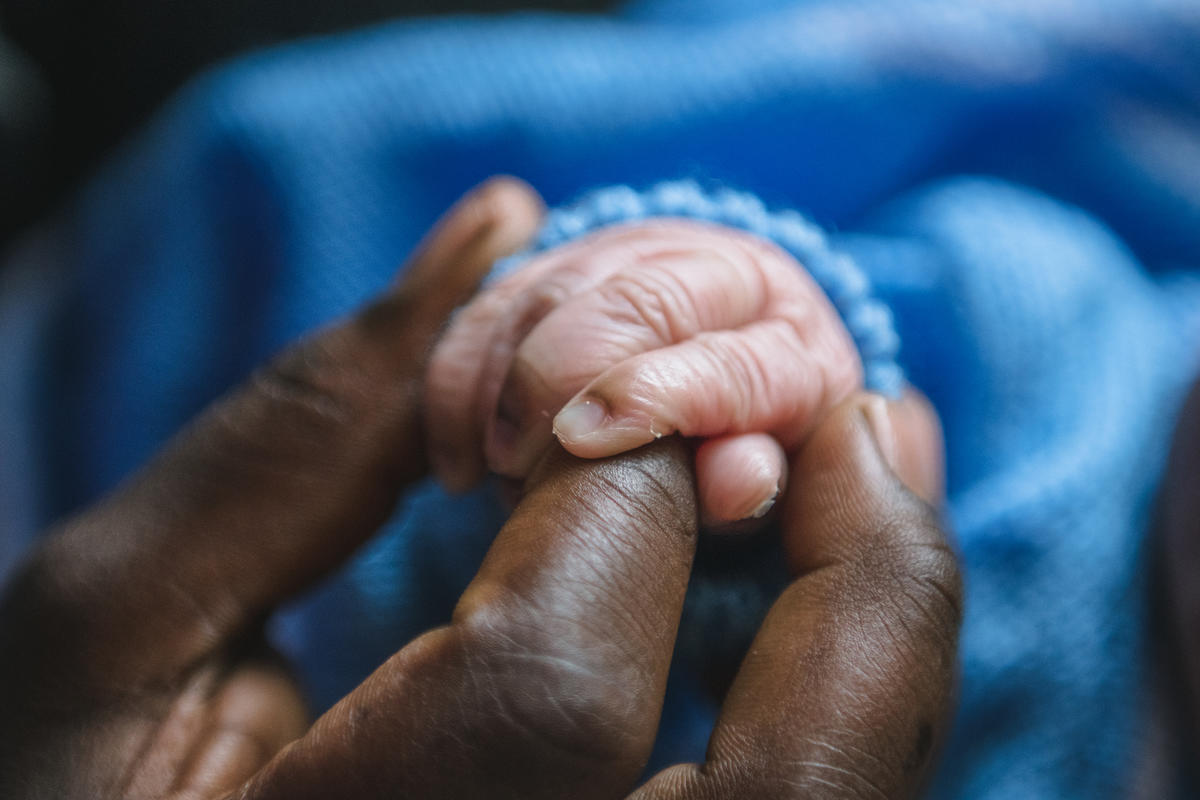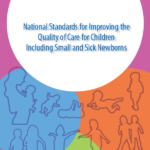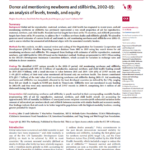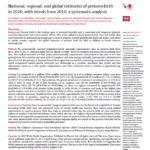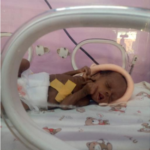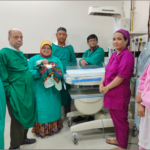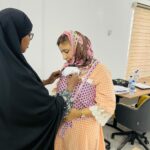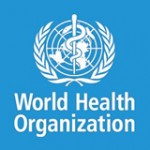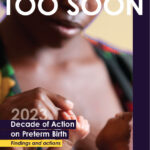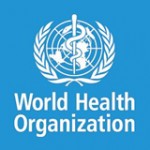Nearly 750,000 newborns lives could be saved every year with specific interventions for small and sick newborns.
In order to achieve SDG 3 (to ensure healthy lives and promote well-being for all at all ages) focus is needed in improving care for every newborn, mainly in those who are born small (from prematurity or intrauterine growth restriction) or become ill. These babies are at high risk of dying or becoming disabled; an estimated 1 million of survivors in this group survive with a long-term disability.
Approximately 80% of the 2.4 million newborn deaths globally every year, are in low-birth-weight (LBW); two thirds of deaths happen in those born prematurely. Care in facilities for newborns is needed for the most common conditions, such as complications from prematurity, intrapartum brain injury, severe bacterial infection, pathological jaundice, and congenital conditions. (1)
2m
infants born with low birthweight who die globally (2015)
1m
premature babies (less than 37 completed weeks of gestation) who die globally every year
30m
newborns who require care in facilities globally every year
All data on this page represents the most recent data available, unless otherwise noted. Please visit our Newborn Numbers page and download the Excel spreadsheet to explore the data further.
What can be done?
Where is the improvement in care most needed?
Ninety-eight percent of neonatal deaths occur in low and middle-income countries, with 75% occurring in Southern Asia and sub-Saharan Africa (2). Of the 10 countries with the highest NMRs, eight are in Africa, where the majority have experienced a recent humanitarian crisis. In humanitarian settings, pregnant and post-partum women face enormous challenges to access care for themselves and for their newborns. These women are also at risk for malnutrition, sexual violence, poor mental health and unplanned pregnancies, as well as those related to births with no skilled attendants. (3)
In high-income countries (HICs), the neonatal mortality rate is usually low, and most small newborns survive and thrive. In middle-income countries (MICs), the risk of disability for infants born between 28 and 32 weeks of gestation is nearly double that of HICs, due to deficiencies in the quality of care. In low-income countries (LICs), disability is uncommon since the smallest and sickest newborns, usually die due to lack of access to essential care or more advanced care when needed. (4)
What is the care needed?
Most newborns can survive and thrive when good quality health care, including appropriate inpatient care, is available. In order to provide appropriate care for small and sick newborns, LMICs require improvements in inpatient care to reduce mortality and avoid long-term complications. High-quality inpatient care requires an adequate space, competent professionals in all areas, and equipment and supplies to deliver the care. All newborns require essential care, particularly at the time of birth and during the first days of life, whether in a health facility or at home. Most small and sick newborns require special inpatient care, which can only be provided in a health facility. Intensive care in a high-level referral facility is only required by a third of sick newborns. In addition, the linkages between obstetric and neonatal services need to be protected and strengthened. The Survive and Thrive report provides a list of in-patient interventions proven effective in preventing newborn mortality and disability, by each level of care; and WHO’s standards for quality care of small and sick newborns in facilities specify the various aspects of the health systems that need to be improved. Core interventions that should be available to all small or sick newborns beyond basic essential care for all newborns include:
- Kangaroo Mother Care started as soon as possible after birth for small newborns, provided as continuously as possible for at least 20 hours per day during the time the newborn is transitioning and receiving neonatal special care;
- Immediate and exclusive breastfeeding, including colostrum, provided by cup, spoon, or NG tube if baby is unable to breastfeed;
- Respiratory support when needed, guaranteeing safe oxygen use through blended air-oxygen and with oxygen saturation monitoring;
- CPAP for respiratory distress requiring positive airway pressure with guarantees of safe oxygen use and oxygen saturation monitoring;
- Appropriate and timely management of suspected serious infections (eg, sepsis, pneumonia, meningitis) with antibiotics and supportive care as needed;
- Family-centered care with families having continuous access to their babies in special care or neonatal intensive care, and participating in providing appropriate care of their baby;
- Developmentally supportive care for newborns and support for families to provide nurturing care in facilities and after discharge home;
- Discharge planning with parents to ensure their competence and confidence to provide essential nurturing care at home; and
- Follow up care after discharge from appropriate trained health care workers to monitor the baby’s condition, support the family for KMC and nurturing care, and referral for any new danger signs or complications (including Retinopathy of Prematurity follow up for small babies receiving oxygen therapy).
The WHO released recommendations for care of the preterm or low-birth-weight infant in 2022 detailing some of these core interventions.
(1,5)
The Nurturing Care Framework for ECD
The Nurturing Care Framework for Early Childhood Development, launched by WHO, UNICEF and the World Bank Group in 2018, demonstrates that focusing on ECD is one of the wisest investments a country can make to boost economic growth. Nurturing care is the provision of a stable environment that promotes children’s health and nutrition and interactions that are responsive, emotionally supportive, and developmentally stimulating, while providing protection from threats.
Neurosensory development begins in-utero and is responsive to positive and negative influences in the external environment from the time of birth. Hence early life exposure to hostile environment, including stress is linked to decreased brain density, with longer-term effects on learning outcomes. Newborns who are small — preterm, low birth weight, and/or small for their gestational age — and/or are sick — from infections, intrapartum related complications and pathological jaundice — are at heightened risk of neurodevelopmental delays and disabilities.
Traditional inpatient care facilities expose vulnerable newborns to excess sound and light conditions in the units, potential harm from unsafe oxygen use, separation of the mother-infant dyad, leading to parental stress and negative psychological effects in addition to delayed feeding and difficulties breastfeeding which can persist after discharge. Of the 13 million preterm newborns who survive globally each year, an estimated 2.7% have moderate to severe impairments and 4.4% have mild neurodevelopmental impairments.
Nurturing care for small and sick newborns is possible. Several evidence-based interventions can create a healing physical and sensory environment. These include Family Centered Care that allows for non-separation of the mother from her newborn; Kangaroo Care, including immediate initiation even when the newborn is receiving special care in the SCU/NICU; the Baby-Friendly Hospital Initiative that supports the mother for breastmilk feeding; safety and security through infection prevention and control; judicious use of antibiotics; and safe oxygen use when needed.
Use of data for action
Countries are required to improve the measurement of the care of small and sick newborns, and their later development and health in order to achieve the goal of ending all preventable deaths by 2030.
It is of utmost importance to collect and analyze data on coverage and quality of care, including long-term outcomes in the most at-risk. In order to guide programs and investments, the continuous monitoring of data on quality of care is a key element for better results for newborns’ survival and thriving.
It is also important to establish good measurement for innovations implemented in LMICs for the care of high-risk newborns. Some examples are simpler and affordable technologies, such as bubble CPAP (continuous positive airway pressure), or innovative implementation approaches, such as task-shifting roles for various cadres of health workers.

Cost of care and return on investment
The Survive and Thrive report mentions that the increased investment by LMICs to improve access to inpatient quality care for small and sick newborns is currently at US$ 0.20 per person and US$ 1,700 per newborn death averted. The investment in health and development of all newborns, providing a good start in the life cycle, and in particular for the most at-risk, will potentially increase economic development in such countries.
Every Newborn Tracking Progress toward SDG Targets
The Every Newborn Action Plan set concrete goals regarding newborn mortality and stillbirths in general and the care for small and sick newborns specifically. Interim goals and targets for 2025 were developed in 2020 through a multi-partnered consultative process by global and country leaders and experts. The four goals are to 1)eliminate preventable newborn and stillbirth deaths by 2025, 2) that 90% of mothers have four or more antenatal visits, 3) 90% of births are attended by trained health personnel, and that 4) 80% of mothers receive routine postnatal care within two days of birth, and 80% of districts in all countries have at least 1 inpatient newborn care unit (level 2) care to provide small and sick/or newborns.
Care of the Small and Sick Newborn Community of Practice (SSNB CoP)
The Care of the Small and Sick Newborn Community of Practice (SSNB CoP), is an interactive platform that allows practitioners and experts to exchange ideas, share lessons learned, disseminate and discuss implementation research results and evidence in the area of newborn health.
The Care of SSNB provides a space for dissemination of the standards and the implementation toolkit, including country experiences shared in webinars.
REQUEST to join the SSNB CoP email list serve by emailing SSNB+subscribe@groups.ibpnetwork.org
REQUEST to join the SSNB CoP Online IBP Exchange Group here.
Sources:
- UNICEF, WHO. Survive and thrive: transforming care for every small and sick newborn. Geneva: World Health Organization; 2019
- WHO.Newborns: improving survival and well-being;2020
- United Nations Population Fund (UNFPA). Maternal Mortality in Humanitarian Crises and in Fragile Settings; 2015
- IAWG. Surviving Day One: Caring for Mothers and Newborns in Emergencies on the Day of Childbirth; 2019
- Moxon et al. Categorising interventions to levels of inpatient care for small and sick newborns: Findings from a global survey; 2019
- The Lancet Small Vulnerable Newborns Series (2023) – This Series presents a new conceptual framework that brings preterm birth, small for gestational age (SGA), and low birthweight (LBW) together under the term “small vulnerable newborns” (SVN) in order to contribute to healthier and thriving women, newborns, children, adults, and societies.
- WHO Standards for improving the quality of care for small and sick newborns in health facilities — Theses standards for the care of small and sick newborns in health facilities define, standardize and mainstream inpatient care of small and sick newborns, building on essential newborn care and ensuring consistency with the WHO quality of care framework.
- Survive and Thrive: transforming care for every small and sick newborn — This report maps out a pathway towards 2030. It is built upon epidemiology, historical trends, lessons learnt and evidence-based interventions.
- Every Preemie Do No Harm Technical Briefs — This series of briefs was developed between 2017-2019 and highlights the safe and effective use of specific inpatient newborn care interventions, with the guiding principle of “Do No Harm.”
- Nurturing Care for Every Newborn — This brief summarizes why nurturing care is essential for every newborn to survive and thrive. It outlines the five components of nurturing care and contains examples of practical actions to create and strengthen nurturing environments for newborns, including those who are born too soon, small or sick.
- The Nurturing Care Framework for Early Childhood Development — This framework draws on state-of-the-art evidence on how ECD unfolds to set out the most effective policies and services that will help parents and caregivers provide nurturing care for babies.
- Implementation Toolkit for Small and Sick Newborn Care —Released on World Prematurity Day 2021, this Implementation Toolkit brings together readings, tools and learnings to provide a one-stop shop for implementers to act, use, share and learn. Information in support of WHO norms and standards from more than 300 implementers around the world is systematically organised to enable implementation and reach every newborn.
- European Standards of Care for Newborn Health — The ESCNH project aims to address disparities in the care of preterm and ill infants by developing standards for a wide range of topics in newborn health.
- Consensus Standards on Infant and Family-Centered Developmental Care — This web document is the full report of the Consensus Committee of the Standards, Competencies, and Best Practices for Infant and Family-Centered Developmental Care in the ICU.
- Guidelines for the Institutional Implementation of Developmental Neuroprotective Care in the NICU: A Joint Position Statement from CANN, CAPWHN, NANN, and COINN (2019) — This position statement provides an evidence-based framework for the institutional implementation of developmentally supportive, neuroprotective care in the neonatal intensive care unit (NICU).
- Newborn Individualized Developmental Care and Assessment Program — NIDCAP is an organization that supports development, enhances strengths and minimizes stress for infants, family and staff who care for them.
- NIDCAP Program Guide — Educational and consultative support and assistance to NICU and special care nursery settings towards effective delivery of intensive and special care in a neurodevelopmentally supportive, individualized, and family-centered framework.
- Integrated Family Delivered Neonatal Care — Online resources by the Imperial College Healthcare NHS Trust to create a consistent, nurturing environment for parents to feel engaged, enabled, educated and empowered as the primary caregivers to their babies.
- Kangaroo Foundation training kit (English, Spanish, French) — This site hosts online resources to encourage the use, development and dissemination of Kangaroo Mother Care (KMC), a methodology based on scientific evidence.
- Family Nurture Intervention — This program helps families re-establish emotional connection and autonomic co-regulation if they are interrupted, with significant short- and long-term benefits for both baby and mother.
- Post Partum Depression in NICU — This resource highlights important results from a community KMC study in India indicating that postpartum depression was reduced in mothers when KMC was used.
- March of Dimes Education for Nurses —This site includes resources to equip nurses with the information they need to provide the highest quality care to newborns and mothers.
- Family Integrated Care — FICare is a model that integrates families as partners in the NICU care team, and provides a structure that supports the implementation of family-centered care. This website provides helpful tools and resources to support this model.
- Psychosocial standards for NICU Parents — This article provides a rationale for and brief description of the process of developing recommendations for program standards for psychosocial support of parents with babies in the neonatal intensive care unit (NICU).
- National Perinatal Association Multidisciplinary Guidelines for the Care of Late Preterm Infants — This supplement was published on behalf of the Late Preterm Infant Guidelines Steering Committee with permission from The National Perinatal Association.
- Small and sick newborn care during the COVID-19 pandemic: global survey and thematic analysis of healthcare providers’ voices and experiences — This study surveyed reported disruptions to small and sick newborn care worldwide and analyzed healthcare providers’ experiences and proposed mitigation strategies
- Immediate “Kangaroo Mother Care” and Survival of Infants with Low Birth Weight — This research published in 2021 shows evidence that immediate KMC dramatically improves survival rates of small and sick newborns.
- Kangaroo mother care had a protective effect on the volume of brain structures in young adults born preterm — This study is one of the first to show evidence of the long-term benefits of KMC.
- NHS Imperial College Healthcare – Parent NICU App — This app helps parents through their NICU journey in the ethos of family integrated care.
- Bliss Resources for Parents (in conjunction with IFDC Care Bundle) — Downloadable resources to give to parents on neonatal units or you can direct them to the information on this website.
